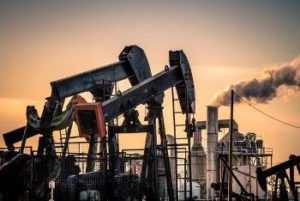
Congo Republic is set to become the latest African country to start debt relief talks with trading houses after borrowing $2 billion from merchants such as Trafigura and Glencore but now finding its debt levels unsustainable, sources familiar with the matter said.
Trading houses regularly lend money to resource-rich clients in financial distress – be it countries such as Congo, Chad, Morocco or Iraq’s Kurdistan region – when other lenders walk away. But traders often charge heavy interest on loans and require access to resources.
Congo has recently appointed investment bank Lazard as an advisor to help it renegotiate debts with the traders, three banking and oil industry sources said.Lazard declined to comment.
The move is similar to Chad which has appointed Rothschild as an advisor in talks with Glencore and four bank lenders.
The development in Congo is similar to the situation in Chad, which borrowed $1.45 billion from Glencore guaranteed by crude cargoes at a time of high oil prices. The central African country was forced to seek a restructuring because it had to channel most oil revenue towards debt repayments instead of its own budget when oil prices fell.
Negotiations to restructure the loan for a second time have been on-going since mid-2017 and became fraught after Chad said it would cut off some of the oil going to Glencore when the two sides clashed over the terms.
Like Chad, Congo Republic has come under pressure from the IMF to restructure its debt, which trade sources fear may result in painful and prolonged talks with the traders unwilling to unilaterally improve credit terms. “The Republic of Congo’s overall debt, including loans from oil traders, is unsustainable and the authorities are planning measures to restore medium-term debt sustainability,” a spokesman for the IMF said.
Glencore and Trafigura declined to comment.
Congo Republic’s finance ministry declined to comment. Congo is seeking an IMF bailout and, as in the case of Chad, the IMF has laid out tough terms before releasing the funds.
Congo is regularly singled out by anti-corruption groups for the opaque management of its oil sector.
In December, the country pledged to cut its 2018 spending by 9 percent in a bid to win the IMF’s support.
The IMF said in October that Congo’s public or publicly guaranteed debt totalled $9.14 billion or around 110 percent of its GDP as of the end of July.
Out of this total, the debt to traders represents about $2.3 billion, the country’s prime minister said in October, without providing a breakdown.
He also said the country was weighing a moratorium on payments with private creditors.
Trafigura has lent the country around $1 billion together with banks. In the case that Congo defaults, the trading house is fully responsible for the debt, although it has insured it with re-insurers, according to two trade sources.
Glencore, backed by a syndicate of banks, lent Brazzaville about $850 million between 2015 and 2016, according to the company’s annual accounts, to be repaid with future oil deliveries over 5 years.
At the end of 2016, Glencore was directly owed $336 million, while the banks were still owed about $500 million.
“All in all, we don’t think the government is in a desperate situation and requires a massive restructuring. Some sort of restructuring with a four to five-year timeframe would probably be acceptable,” said a source at one of the trading houses who asked not to be identified because the issue cannot be discussed in public.
Congo produces close to 280,000 barrels per day (bpd) and is heavily dependent on its oil sales revenue.
It said last June that it aimed to increase production by 25 percent to 350,000 bpd.
Unlike Chad, Congo has a wider set of creditors. Glencore accounted for nearly all of Chad’s external commercial debt.
Agency Report